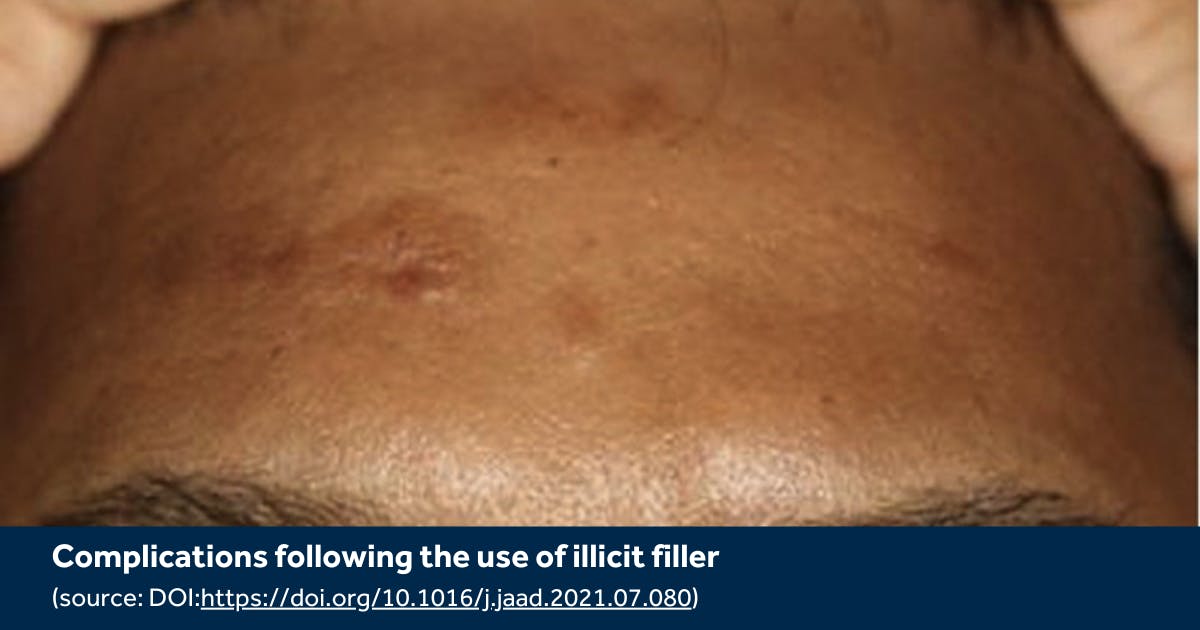Managing Filler Complications in Skin of Colour

An article published on Healio explores the management of hyaluronic acid (HA) filler complications in patients with skin of colour (SOC). It suggests patients with darker skin types respond differently to aesthetic medicine treatments and therefore, require different injecting techniques.
The article covers a presentation given by Dr Cheryl Burgess, MD, FAAD, at the Skin of Color Update 2023 meeting.
Dr Cheryl is the medical director at the Center for Dermatology and Dermatologic Surgery in Washington, USA. She’s also on the board of directors at the American Academy of Dermatology and the Skin of Color Society.
Aesthetics expert and Director of Education at Harley Academy, Dr Kalpna Pindolia also weighs in on the discussion.

Are the vast majority of filler complications caused by poor technique?
In the presentation, Dr Cheryl states that “90% of filler complications are caused by poor technique” and only 10% of complications are down to the product itself.
Dr Kal notes, “This US expert’s opinion piece highlights hyaluronic acid filler complications in skin of colour. Dr Cheryl states, ‘I’ve noticed that in my [patients with] skin of color, I’ve had more reactions to HA than I’ve ever seen when I used to do collagen’. It’s important to consider that this is an experience-based comment.”
Preventing filler complications in skin of colour
Dr Kal suggests, “Consider the nuances of treating these patients holistically. Beyond clinical considerations, it’s important to talk about culture and ethnic origin in the consultation as this is a crucial element of the outcome.”
Statistically, this article suggests that patients with skin of colour are more likely to develop complications from HA filler than those with paler complexions.
Dr Cheryl advises the best way to reduce the risk of a complication occurring is to “slow down the filler injection and watch for signs of pain. If a patient is experiencing sudden excruciating pain that is ignored, it could lead to necrosis.
“Finer-gauge needles, such as a 30-gauge that is longer than 1 inch – in areas such as the infraorbital hollows is also helpful to avoid complications such as necrosis, particularly for patients with skin of colour”, she further explains.
Dr Kal responds, “This is an interesting statement. The smaller the gauge of the needle, theoretically, the higher the extrusion force required to deliver the filler. This could increase the risk of vascular occlusion regardless of skin colour. In our practice, we use a cannula to mitigate the risk of occlusion in this region.”

How to manage filler complications in patients with skin of colour
Dr Cheryl notes that if signs of blanching are beginning to appear, “immediately use a topical or systemic vasodilator and give the patient Viagra, whether they are a man or a woman, as it will open the blood vessels.”
Using a topical or systemic vasodilator and prescribing Viagra is not standard practice in the UK. “Skin blanching is indeed an early sign of a compromised vessel and can be difficult to detect in skin of colour, especially with darker tones”, Dr Kal confirms.
To reverse any unwanted adverse effects of HA filler, hyaluronidase can be used to manage milder complications such as overcorrection. Dr Cheryl states that it can also be used for “more serious complications such as blindness within 90 minutes of the first signs of impaired vision.”
Advice for new aesthetics practitioners injecting patients with skin of colour
The consultation is a crucial element of the injecting process when it comes to providing patients with darker tones with a tailored experience.
Dr Kal emphasises the importance of actively considering these patients as an underserved group. She states, “From your continuing professional education, to how you advertise your service, to inclusive communication at the consultation stage… are you considering these patients needs?”
Mythbusting is another top tip that Dr Kal recommends. “Take the time to explain that darker skin does age more slowly as there is less UV-related damage. However, volume loss can still occur, which fillers can address.”
“Make sure you also discuss the additional considerations of hyperpigmentation and scarring - such as keloid scarring - though the risk is still low with HA facial filler injections.” Dr Kal explains.
We heartily recommend reading Black Skin: The Definitive Skincare Guide by educator and skin specialist, Dija Ayodele, to find out more. She previously spoke to us about the importance of understanding “why certain groups, in particular Black patients, have certain mindsets or attitudes.” This can provide a useful “cultural context of why certain conditions are more devastating on darker skin tones”, she clarified.

Treat patients with confidence and aesthetic medicine knowledge
Feeling confident when consulting, injecting and treating aesthetic patients is vital. Here at Harley Academy, we offer a multitude of Injectables Masterclasses that hone in on specific, key principles of injecting and patient assessment.
Our Preventing & Managing Dermal Filler Complications eLearning course can be done from the comfort of your home. It’s designed to teach you how to prevent, identify and manage filler complications through real-life case studies. This valuable knowledge helps to prepare you for any complications or vascular events that may present in clinic.
To learn about our extensive catalogue of medical aesthetics training, book a call with our Course Advisors. Our dedicated team will guide you in selecting an aesthetics course that works for you and your goals.
All information correct at the time of publication
Download our full prospectus
Browse all our injectables, dermal fillers and cosmetic dermatology courses in one document
By submitting this form, you agree to receive marketing about our products, events, promotions and exclusive content. Consent is not a condition of purchase, and no purchase is necessary. Message frequency varies. View our Privacy Policy and Terms & Conditions
Attend our FREE open evening
If you're not sure which course is right for you, let us help
Join us online or in-person at our free open evening to learn more
Our Partners














STAY INFORMED
Sign up to receive industry news, careers advice, special offers and information on Harley Academy courses and services

